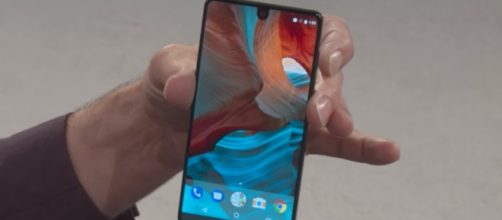With the father of Android unveiling a premium looking smartphone called the Essential phone on the 30th of May, Andy Rubin was able to turn the heads of many tech geeks. Bodying impressive specs and a unique design, the Essential phone is one of its kind in terms of aesthetics. It has very thin bezels on the sides and a chin that only understandable makes up for it. On the top, you'll find a camera cut out, for the front facing camera, shaped like a U which raised a lot of questions concerning the display.
The phone is powered by 1.9GHz octa-core Qualcomm Snapdragon 835 processor and it comes with 4GB of RAM.
If you don't understand any of that, it's safe to assume that its as powerful as (or perhaps more powerful than) the phone you're currently using if it was released in the past year.
So what exactly is the hype all about?
Is it just like any other phone with a pretty body? Does it have a holographic display?
Well, no - to that last question. But the Essential Phone comes with an experience of pure Android - which will be updated constantly for two years and will most likely cost less than the Google Pixel 2. Andy Rubin, taking a leaf from the book of Apple, promises that this phone will get updates for the entire time you own it.
But on top of pure Android, the software is meant to act as a vanguard for the Essential's new ecosystem of smart devices.
This serves Andy Rubin's vision of a home where every device is integrated into a grid of connectivity and reliability.
Along with the phone, the world's smallest 360° camera was announced which can be modularly attached to the back of the phone. This is made possible using magnets that will allow the camera to be snapped to the back of the phone. And the word on the street is that there will be more accessories or modules that will be compatible with the device in the near future.
The body of the phone has ceramic on the back, titanium rail and Gorilla glass on the front. This makes for a very rigid phone that is not susceptible to scratches or cracks from dropping.
The User Experience
The remarkable 5.7-inch display on the phone will, unfortunately, not be able to work well with VR headsets as it's LCD and not OLED.
Nonetheless, the huge display on a relatively small phone makes usability easier than its competition.
The camera on the phone works by combining two 13-megapixel lenses. One of them is true RGB and other is monochrome. The software combines the data received from both the lenses to ensure a picture of high quality. But it must be stated that it's still not as good as the one on the Galaxy S8 or the iPhone 7/7 plus.
The battery life, as expected from a modern flagship, is excellent. The phone carries a 3040 mAh battery on its back and can last an entire day. This is partially because of the LCD display that doesn't take much juice to do its thing.
The performance of the phone is as good as you might predict since it runs stock Android with minimum bloatware.
The Essential Phone is not meant to be a phone that only lasts a year before it's replaced by its successor. It's a phone that's meant to grow like one's personality. It's meant to adapt to changes and still perform optimally. it's meant to begin a new wave of smartphones that will have a degree of integration into our lives like no other phone.


